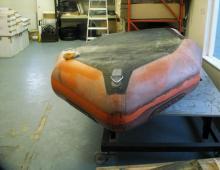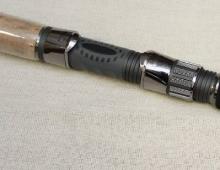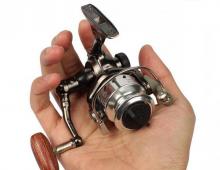Fly fishing tackle
Collecting fly fishing equipment
This type of fishing is considered one of the most elite and highly sporting. It was first used in Europe in the Middle Ages. Already used at that time artificial baits. This method is primarily intended for catching fish that rises to the top layer of water in search of various insects.
Before talking about the method of fly fishing and its intricacies, we simply must prepare tackle. Without this, well, there is no way to do it. So be patient with 4 minutes and read all about gear selection before moving on to the next step.
 One of the most important pieces of equipment for fly fishing is rod. It should be an extension of your hand and at the same time have the following qualities:
One of the most important pieces of equipment for fly fishing is rod. It should be an extension of your hand and at the same time have the following qualities:
- direct
- elastic
- Durable
- flexible
 Coil when fly fishing, it performs slightly different functions than always. Basically, it is needed for storing the cord and playing fish of medium and large sizes. Fly fishing reels can be divided into three types:
Coil when fly fishing, it performs slightly different functions than always. Basically, it is needed for storing the cord and playing fish of medium and large sizes. Fly fishing reels can be divided into three types: - Single
- Automatic
- Multiplier
To start fishing this way, the simplest and lightest reel with a brake will be quite enough for you. Coil capacity - 25-35 m. cord diameter 0,35-0,5.
With time and experience, you will be able to find the perfect coil for your loved one.  Choice of cord also cannot be neglected. It, like the coil, is divided into three types:
Choice of cord also cannot be neglected. It, like the coil, is divided into three types:
- Floating
- Weakly sinking
- Sinking
The choice of line type depends on what layer you are going to fish in. The first two are used for surface fishing, the third - for fishing in the middle and lower layers. Their color should, respectively, beat light and dark tones.
For beginners, it is better to use floating cords. An example of such a cord is in the picture on the right. In order to prolong the life of the line, it must be moistened with special products after each fishing.
Undergrowth
An undergrowth is attached to the cord. This is a certain piece of fishing line of a conical shape. With an initial diameter of 0.5-0.8 and a final diameter of 0.1-0.25. It is used to ensure that the fly does not get confused with the line when casting. In addition, when the undergrowth lies on the water, it does not wriggle, which in turn does not scare the fish away from the fly.
undergrowth can make your own or buy. For self-production, you will need 1.3 m of fishing line Ø 0.5, the following pieces are 15 cm long and the difference in diameter between them is 0.05. The last piece of fishing line will be Ø 0.2 long 50-60 cm to which the fly will be attached. 
The undergrowth should be the same length as the rod for ease of casting. If it is longer, then we shorten it from the side of a thick fishing line, to the desired length.
Homemade undergrowth is knitted with the next knot shown in the figure below. The undergrowth is attached to the cord either with a sewing needle or with a loop-to-loop knot. 
But in order to learn how to cast fly fishing tackle, a piece of fishing line 2-2.5 m. Ø 0.27 is suitable. In case of any damage to the undergrowth, it is changed. And this means that you need to have 2-3 undergrowth with you.
On this, the first part of the article came to an end, and in the next publication we will write about the technique of fly fishing and be sure to show everything on the video.



